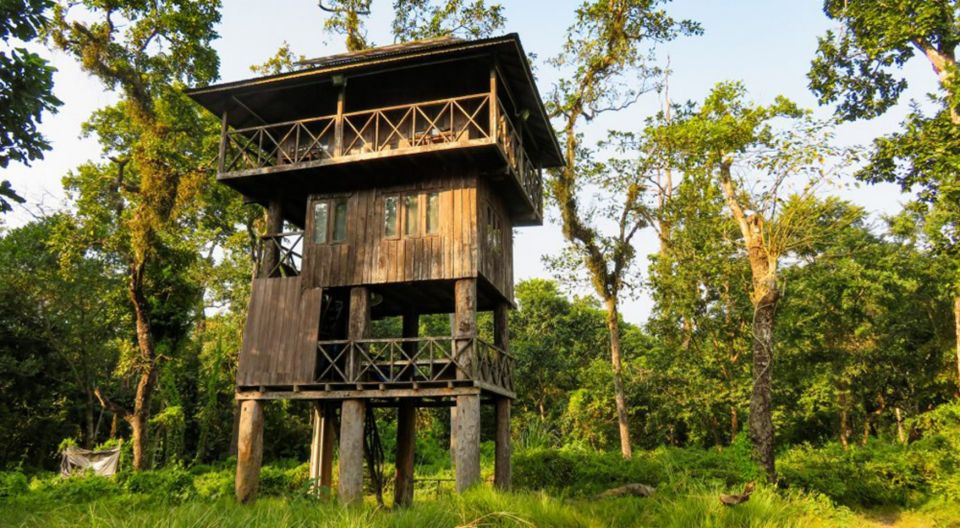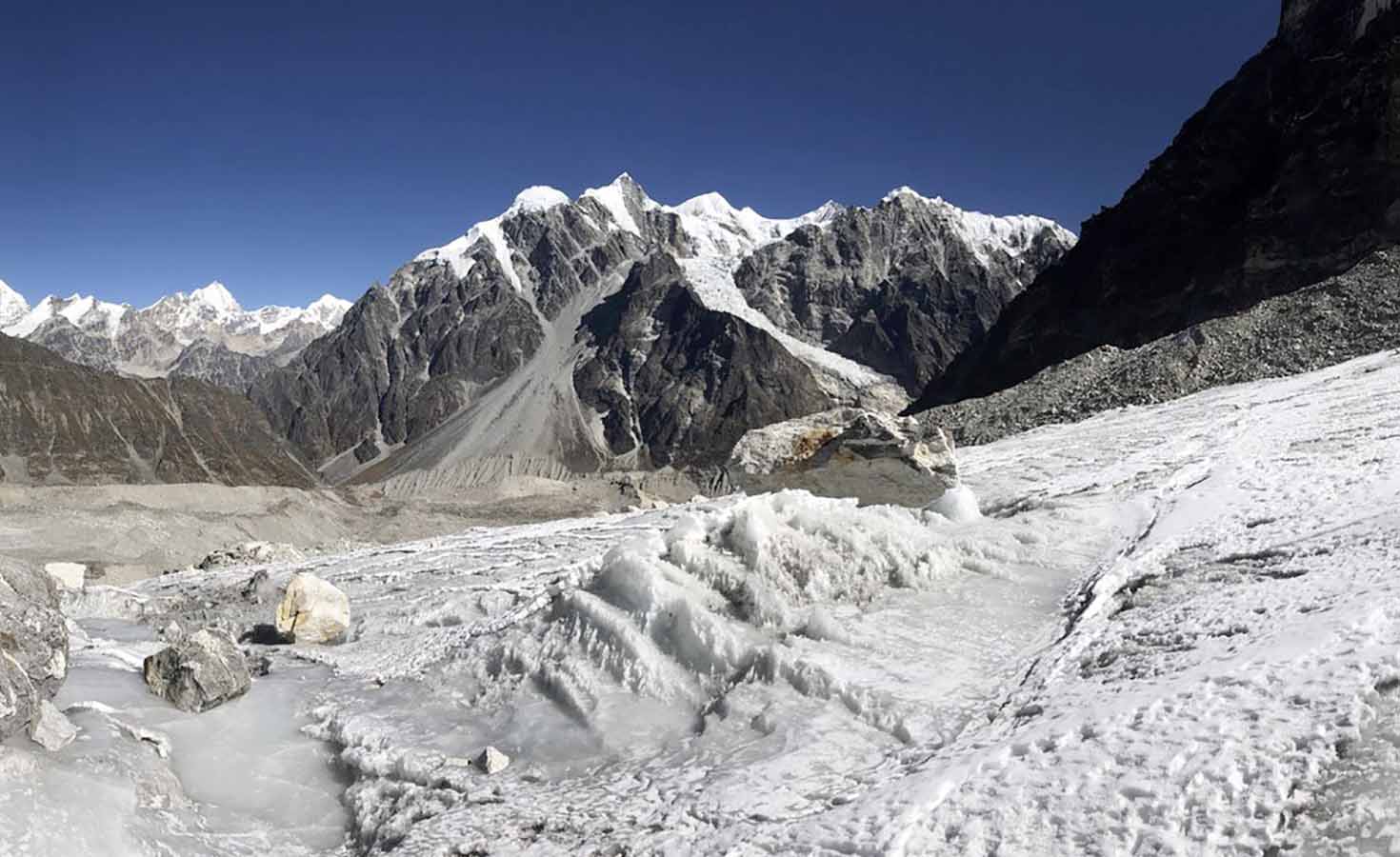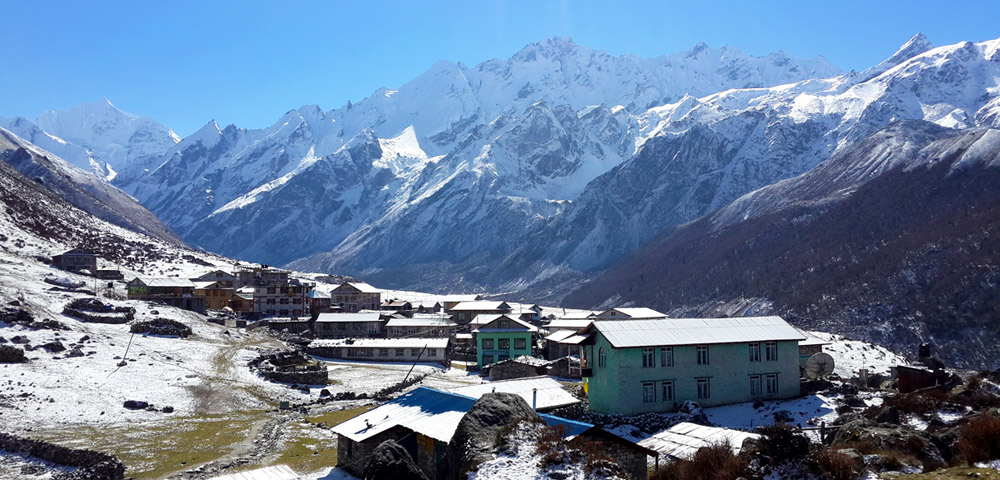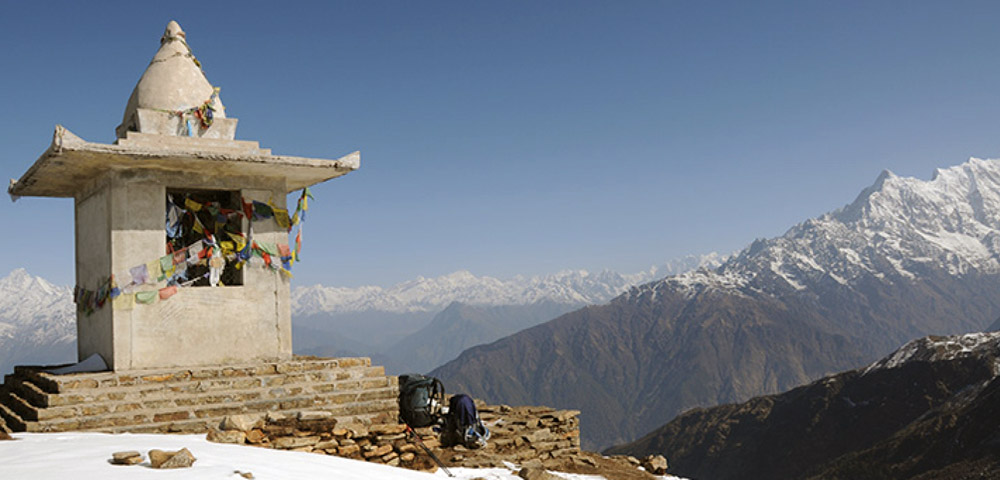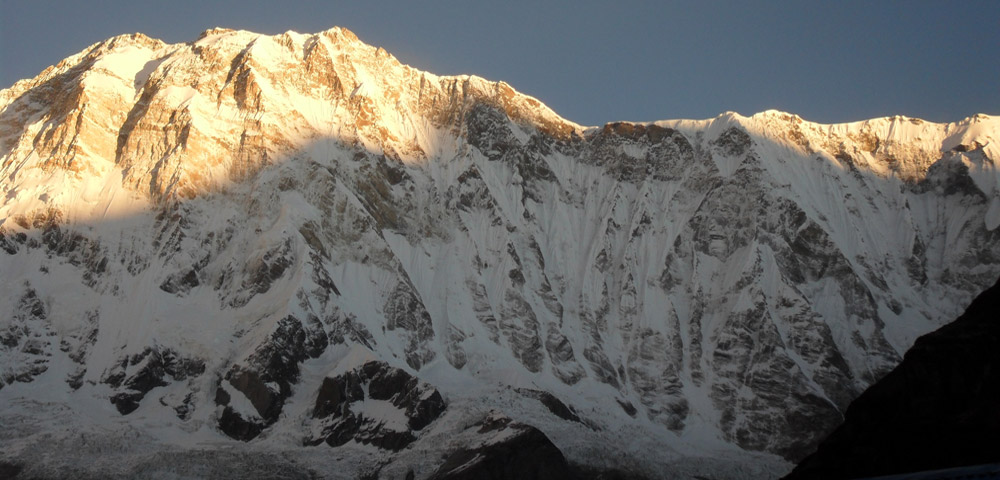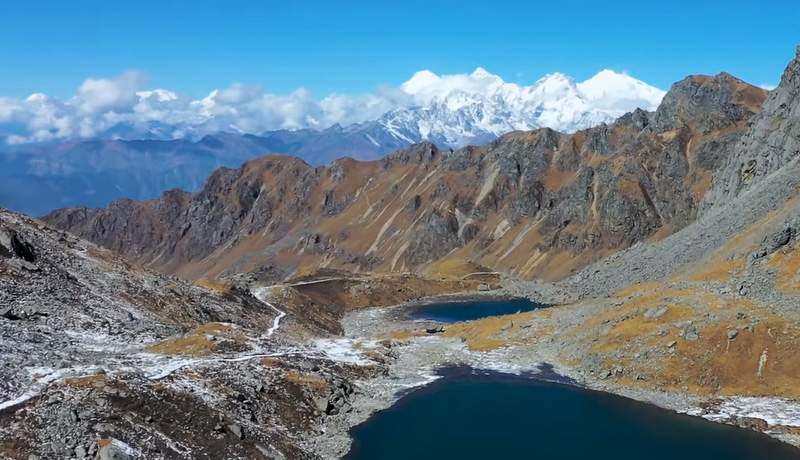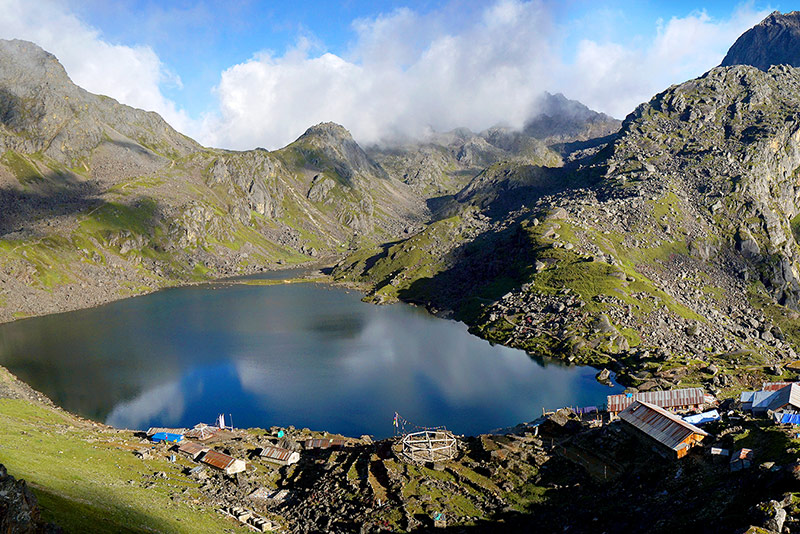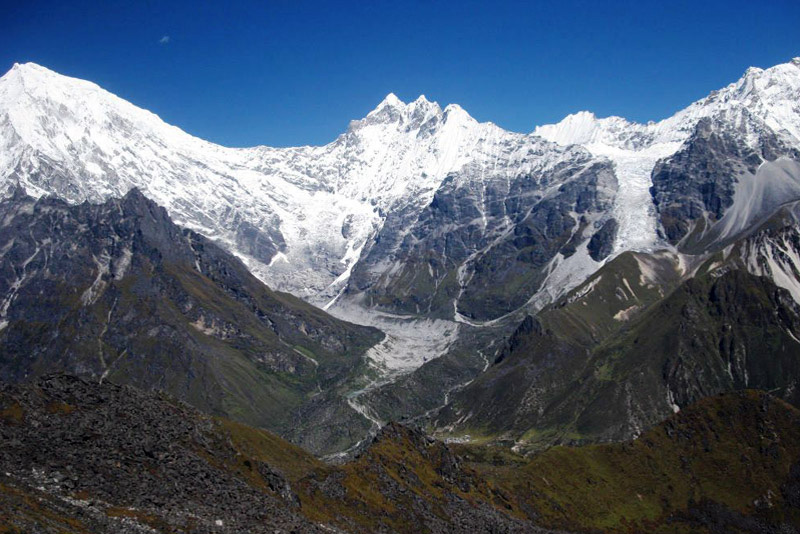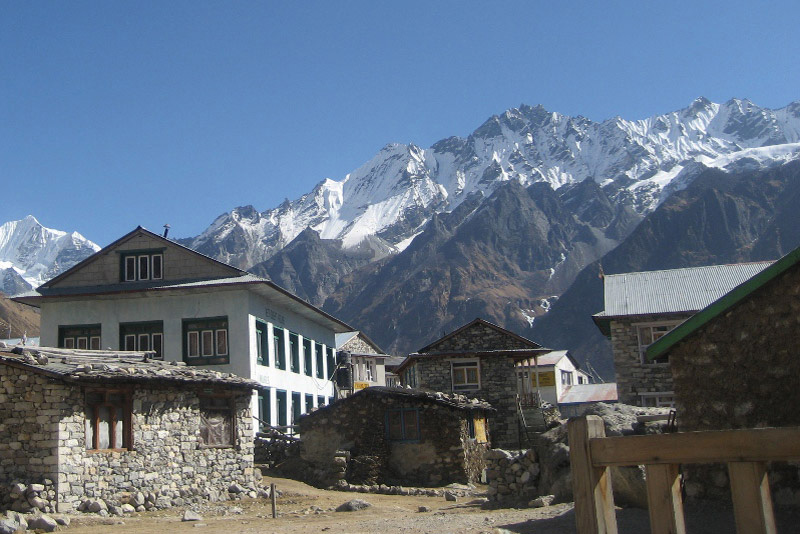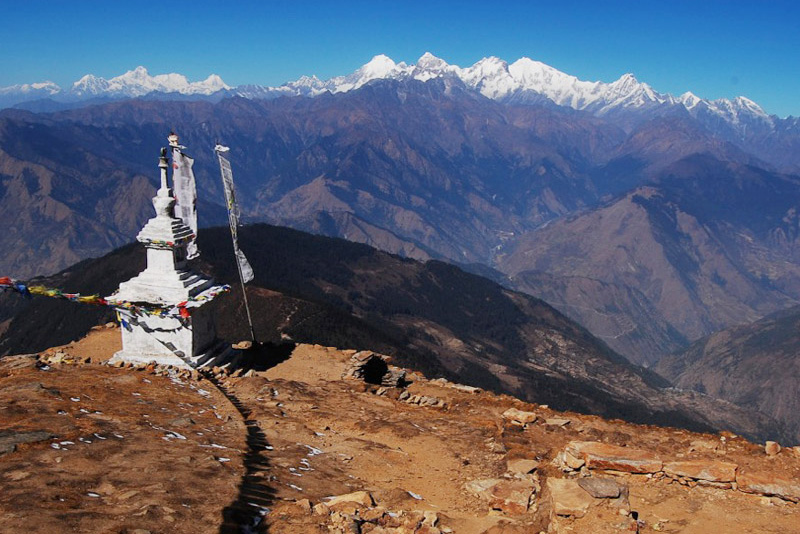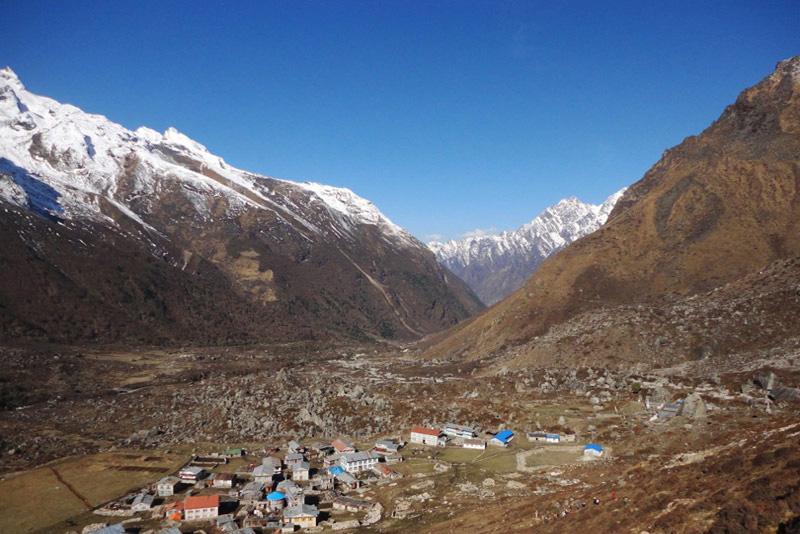Tilman Pass Trek
The Tilman Pass Trek is a remote and challenging trekking route in Nepal that crosses the high-altitude Tilman Pass. This trek offers a truly off-the-beaten-path adventure. Named after the legendary British explorer H.W. Tilman, this trek takes you through some of Nepal’s most pristine and untouched landscapes.
The Tilman Pass Trek begins with your arrival at Tribhuvan International Airport in Kathmandu, from which point you will drive to Sybrubensi via Dhunche. The route to Sybrubensi is packed with picturesque views of verdant forests and quaint settlements. Langtang village, the oldest Tamang settlement in the Langtang region, is reached after passing via Lama Hotel. The trail continues through the Langtang valley until it reaches Kyanjin Gompa, the oldest monastery in Langtang. You also trek to Tserko-Ri (4,984 meters) for a panoramic view of the Langtang Himal range, Langshisha Ri (6427 meters), Yala Peak (5,500 meters), and other peaks. The journey takes you from a lovely rhododendron forest to yak pastures to enormous glacier moraines. As the trail passes through Langtang National Park, a variety of alpine flowers and unique animals can be observed during the hike. Crossing Tilman Pass (5320m) can be difficult because the trail is typically frozen and prone to rock falls. The trail reaches the calm lakes of Panchpokhari, the ninth-highest wetland area, after traversing Tilman Pass. The hike concludes with a walk through the tranquil trees to Chautara. The Tilman Pass Trek is suitable for explorers who wish to tackle a tranquil path at the foot of the Himalayas.
Tilman Pass Trek Highlights
Tilman Pass trek is in Nepal’s Langtang area is situated in the wilderness at an altitude of 5320 meters. It was named in honor of the British explorer and adventurer H. W. Tillman (1898-1977) who visited the Himalaya in the middle of the 20th century. Tilman Pass is one of the most treacherous mountain crossings in Nepal; it connects the Tamang valley of Langtang to the sacred lakes of Panchpokhari and offers uninterrupted views of the Langtang Himal range and Jugal Himal range.
Tilman Pass: The trek’s namesake, Tilman Pass, is a high mountain pass located at an altitude of approximately 5,200 meters (17,060 feet). Crossing this pass is a significant accomplishment and offers panoramic views of the surrounding mountains and valleys.
Remote Wilderness: The trek takes you through some of the most remote and untouched areas of Nepal. You’ll experience a true sense of isolation and adventure as you journey through rugged terrains.
Unspoiled Landscapes: The trek offers a variety of landscapes, from lush forests and alpine meadows to high mountain passes and glacial terrain. The ever-changing scenery keeps the trek interesting.
Stunning Mountain Views: Throughout the trek, you’ll enjoy spectacular views of Himalayan peaks, including Langtang Lirung, Langshisha Ri, and Ganesh Himal ranges.
Unique Flora and Fauna: The region is rich in biodiversity, with various species of flora and fauna. You might spot rare wildlife such as snow leopards, red pandas, and Himalayan tahr.
Cultural Encounters: The trek takes you through traditional villages inhabited by different ethnic groups, including the Tamang and Sherpa communities. You’ll have the chance to interact with locals and experience their cultures and traditions.
Challenging Adventure: The Tilman Pass Trek is considered challenging and is suitable for experienced trekkers seeking a more remote and adventurous experience.
Photography Opportunities: The pristine landscapes, towering mountains, and unique cultural encounters provide plenty of opportunities for capturing breathtaking photographs.
Camping Experience: The trek involves camping in remote and picturesque locations, allowing you to immerse yourself in the natural surroundings.
Off-the-Beaten-Path: The Tilman Pass Trek is less crowded compared to popular trekking routes, providing a quieter and more authentic trekking experience.
The Best time for Tilman Pass Trek
The best time to do the Tilman Pass Trek is during the pre-monsoon spring season (March to May) and the post-monsoon autumn season (September to November). These months offer the most favorable weather and trekking conditions for a successful and enjoyable trek. Both spring and autumn offer excellent trekking conditions, and your choice between the two depends on your preferences. Spring is known for its vibrant flora, lush landscapes, and blooming flowers, while autumn provides clear skies, pleasant temperatures, and excellent photography opportunities.
When you arrive at Tibhuvan International Airport, our guide will pick you up and take you to your hotel in the bustling Thamel district of Kathmandu. Depending on your arrival time, you can choose to relax for the next journey, see the city’s attractions, or shop for adventure gear in one of Kathmandu’s many adventure supply stores. We’ll assemble our bikes and be ready for the journey in the afternoon.
You transport yourself to Syabrubensi in a private vehicle. You will arrive in Trishuli bazaar, where you will have lunch, by a winding route alongside the Trishuli River. You reach Syabrubensi after passing various hillside towns, rivers, and waterfalls along route. It takes approximately 7-8 hours to reach Syabrubensi.
Today marks the beginning of the trek. The initial section of the trail passes Bhote Koshi before continuing down Langtang Khola. The trail ascends steadily until Bamboo (1960 m), where it passes through bamboo and rhododendron trees. As you travel through Langtang National Park, you may encounter wild boars, langur monkeys, and possibly even red pandas. The following portion of the walk, the ascent to Rimche (2,400 m), will be somewhat more challenging. The trail arrives at Lama Hotel around thirty minutes after Rimche.
You depart the Lama Hotel and ascend gradually a steep woodland slope. As you ascend further, you can catch glimpses of Langtang Lirung (7227m). Three hours later, you arrive in Ghodatabela, which literally translates as Horse Stable. The trail continues to gradually ascend as you approach the Tamang town of Langtang. Langtang Village is one of the most ancient settlements along this trekking route. It was destroyed by the 2015 earthquake, although it has since been restored. Locals can share their stories of perseverance.
The trek from Langtang to Kyanjin Gompa takes approximately three to four hours. The trail ascends steadily to Sindum and then Yamphu (3640m). As one passes through the little towns and yak pastures, the valley widens and the vistas improve. There is an amazing view of the Langtang Himal range to the northwest. You reach Kyanjin Gompa before to midday. Kyanjin Gompa, the oldest and holiest monastery in Langtang, is encircled on all sides by snowcapped peaks.
Today, you will relax so that your body can acclimate to the greater altitude. Kyanjin Gompa, a historic monastery in the shadow of Langtang Lirung, is open for exploration (7227m). Kyanjin Gompa is said to be approximately six centuries old and has evolved into a religious and spiritual sanctuary. Kyanjin’s cheese plant is renowned for its exquisite yak cheese. Additionally, you will walk to Tserko-Ri (4984m) for a magnificent view of the Langtang Himal range, Langshisha Ri (6427m), and Yala Peak (5500m). Then, you return to Kyanjin Gompa to spend the night.
You depart Kyanjin Gompa in the early morning and travel to Langshisa Kharka. You must move quickly since the terrain will be frozen and the risk of falling rocks will be reduced if you do so. The terrain is snowy, ice, and rocks fall continuously throughout the day, making for a challenging journey. Two hours later, the slope levels out. Along the route, there are magnificent views of Langshisa Ri (7427m) and Dorje Lakpa (6966m). Towards the end, you begin to ascend and skirt around some of the old moraines. Prayer flags and stone buildings denote the exact location of Langshisa Kharka.
After breakfast, you make your way uphill to Moraine Camp. You ascend the steep moraine of Langshisa Glacier through high alpine flora to reach Moraine Camp, which is located at an elevation of 4,580 meters. You are currently surrounded by magnificent snow-capped mountains, and the scenery is breathtaking.
6-7 hours of hiking is required to reach Yak Kharka through Tilman’s Pass (5320m). The boulder field becomes more precarious as the sun rises, so it is best to get an early start. As the footing is slick and composed of unstable rocks, the ascent will be both physically and mentally demanding. As you near the summit, you may experience difficulty breathing due to the high altitude, as Tilman Pass is among the highest places on this walk. From the summit, there are magnificent views of the surrounding snow-capped mountains. Then, you descend from the opposite side while traversing loose rocks to reach Yak Kharka.
Today we go on our journey to Tin Pokhari, which translates to “three lakes.” You will descend the snow-covered hills and unstable rocks. These lakes are entirely frozen during the winter months. It is a beautiful camping spot since you can enjoy the breathtaking beauty of the lakes as well as views of the neighboring Himalayan range.
Today, you will hike to the serene Panchpokhari (Five Lakes). You travel by rugged slopes and alpine vegetation en route. As there are no settlements along the route and you will be going primarily through the forest to reach Panchpokhari, the journey today is tranquil and peaceful. Panchpokhari is categorized as a wetland and is essential for the preservation of the local wildlife. Each of these Panchpokhari lakes is positioned close to the others and is equally gorgeous and serene. The surrounding landscape is really breathtaking.
You tour the Five Lakes and the surrounding region on this day. You can rise early in the morning to witness the sunrise. You have a magnificent view of Dorje Lakpa (6966m) and the Jugal Himal range from uphill. On the nearby hills, you can see a variety of bird species and fragrant flowers. Panchpokhari is also a protected pilgrimage site where the August Janai Purnima celebration is celebrated. Each year, several Hindu and Buddhist pilgrims visit this location. Nearby the lake, the pilgrims also visit the shrine of Lord Shiva.
You depart Panch Pokhari early in the morning and go towards Nasimpati. Through the rocky slopes, there will be a rather steep descent. You make your way to Nasimpati while through alpine vegetation and observing the local fauna.
You depart from Nasimpati and trek through rocky slopes and rhododendron trees. The remaining distance to Hile Bhanjyang would be a downward trek. The traditions and way of life of the villagers in this picturesque village are, to say the least, fascinating.
Today, following breakfast, you travel to Pauwabas. It will be a steep ascent through the trees. Passing through the rhododendron forests, you appreciate the region’s natural splendor. On a clear day, the peaks of the Jugal Himal Range are also visible. You then descend a steep route to reach Pauwabas.
Today’s walk traverses rhododendron, oak, and pine forests. You may encounter wild wildlife such as mountain deer, langur monkeys, and the national bird “Danfe” if you are fortunate. The trail is level and there are numerous nomad dwellings along the way. On the way to Kami Kharka, you can also enjoy a distant view of Langtang Lirung (7227m) and Dorje Lakpa (6966m). You pass a collection of waterfalls en route to Kami Kharka after an easy 6-to-7-hour hike.
You stroll downhill through the rhododendron and pine forests to reach Sano Okhareni. You reach Sano Okhareni by traversing a number of tiny streams and nomad communities. When you camp near pine forests, you appreciate the quiet surroundings.
Today is the final day of our adventure. After around four to five hours of walking downhill, you will arrive in Chautara. On the way to Chautara, you pass by numerous little villages inhabited by diverse ethnic groups. After arriving in the bustling town of Chautara, you drive back to Kathmandu while taking in the picturesque landscape. After landing in Kathmandu, you will be transported to your accommodation.
Today we will take you to the airport to catch your flight out of Nepal. Alternatively, if you’d like to stay longer, we may make additional travel arrangements to assist you continue your Nepal experience.
- All necessary ground transfers.
- All necessary accommodations as per the itinerary.
- Tea House accommodations during the trek.
- Daily breakfast, lunch and dinner during the trekking.
- All necessary paper works.
- All necessary trekking permits.
- Experienced and First Aid-trained trekking guide.
- Strong, helpful porters.
- Comprehensive medical supplies.
- Trekking map.
- Insurance of all local team.
- Warm clothing and trekking gear for staff.
- Sleeping bag and trip duffle bag.
- Trekking certificate issued by us.
- Welcome and farewell dinner in Kathmandu.
- Nepal Visa fee.
- International flights.
- All meals not mentioned in inclusions.
- Personal expenses not stipulated.
- Optional add-ons.
- Gratuities.
You might also like...
Top Add-on Trips
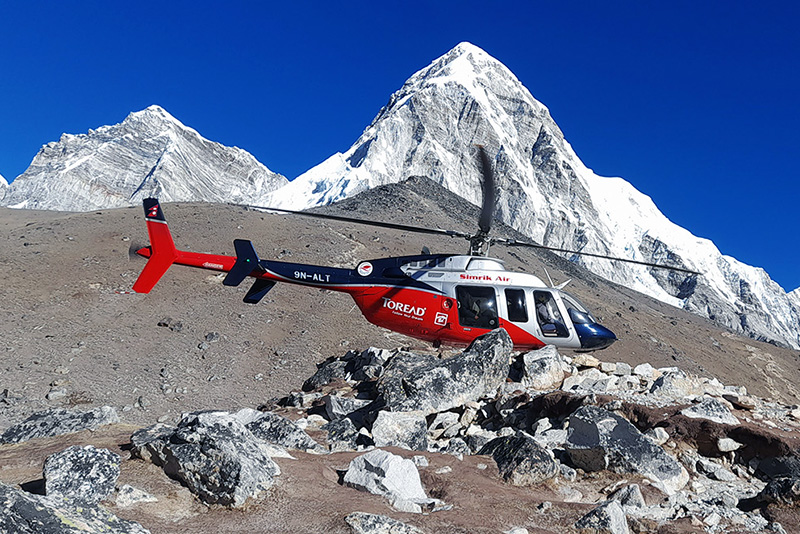
Everest Base Camp Helicopter Tour

Monastery Stay Tour
